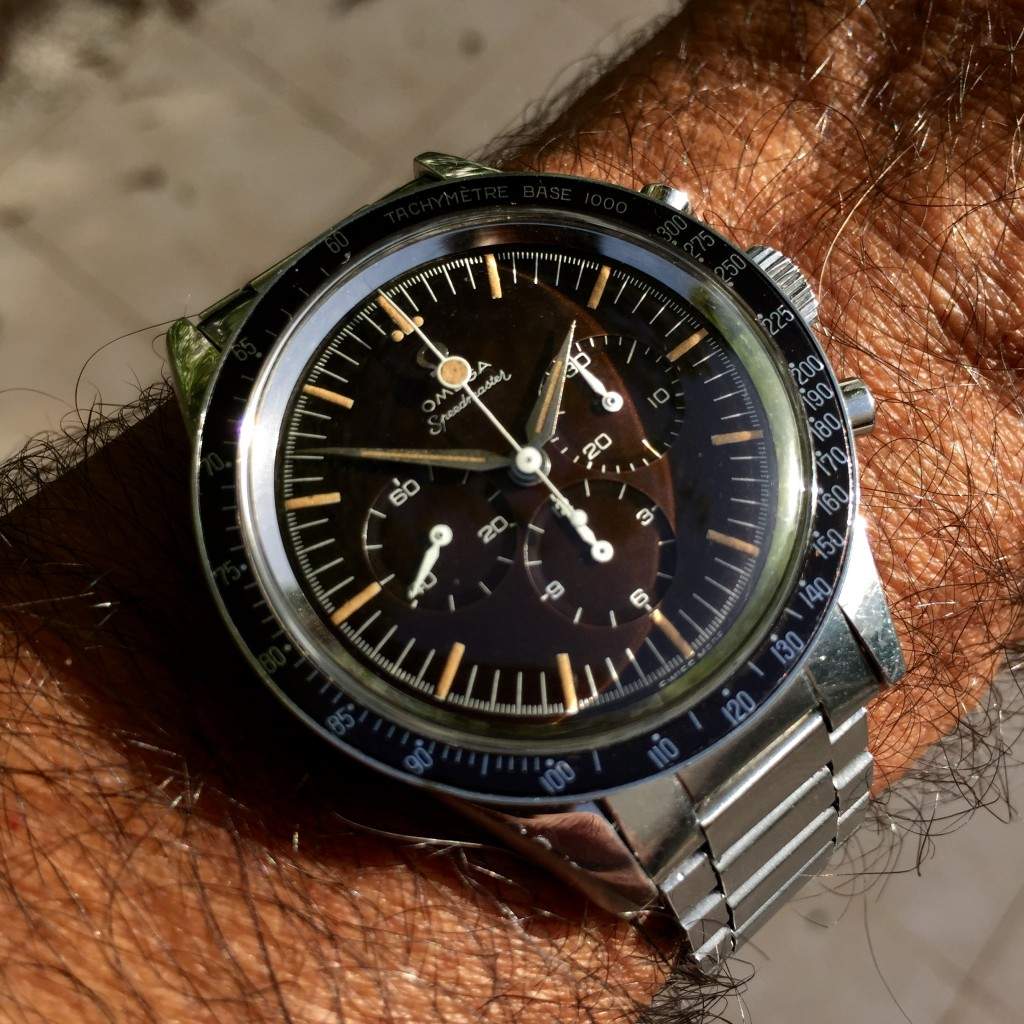In depth -review Profile of an Icon: Omega Speedmaster 2998-1
Fine WatchesCollector's Insight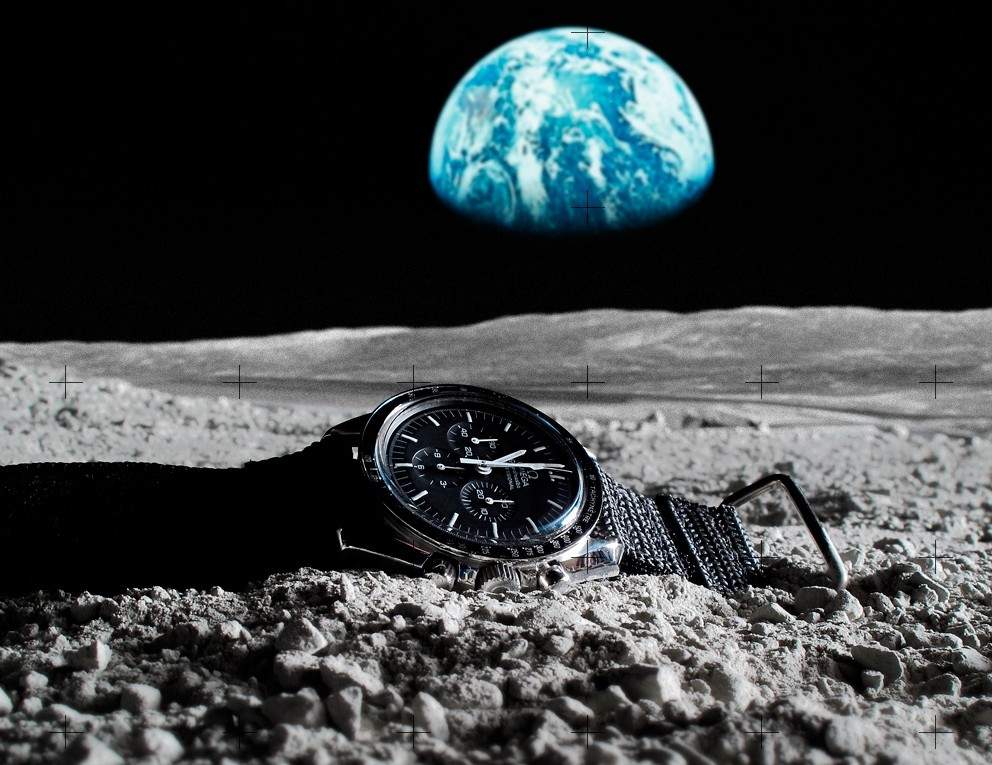
Type the word ‘Icon’ in the Merriam Webster dictionary and the following appears: An object of uncritical devotion.
For me an Icon is something that has stood the test of time. In the vintage car world a Mercedes Gullwing 300SL can proudly call itself an Icon. In vintage watches a Jaeger Le Coultre Reverso can be considered an Icon. So is the Rolex submariner.
For many collectors though one of the ultimate Icons of watchmaking and chronographs is a line from Omega. The Speedmaster.
Omega is the third most valuable watch brand on the planet (behind Rolex and Cartier see rankings here) and one thing is certain: the majority of the $3bn brand value Omega carries is due to a watch that was introduced in 1957: The legendary Speedmaster.
Initially, the Speedmaster was a success but did not gain fame and following until NASA approved the watch for their astronauts following successful testing in 1964 and the announcement on March 1, 1965. Despite great competition from the likes of Rolex and Blancpain among others, the Omega Speedmaster was the only watch to have passed all the strict tests imposed by NASA such as heat, coldness, temperature pressure, humidity, shock absorption, high pressure, vibration and lastly acceleration (for all the specific tests by NASA please click here).
After 1969 (when OMEGA watches did make it to the moon) all Speedmasters gained an inscription on the case back celebrating the Speedmaster as the first watch to be worn on the moon.
However we are going look at the early Speedmaster watches also known as ‘Pre- moon’. It is these watches that are the most sought after by collectors and for good reason. They are the most beautiful and ‘pure’.
The most important Speedmaster References: CK 2915 & 2998 (1-3)
The first Omega Speedmaster reference was the CK 2915 (see picture here).
Also known as the ‘Broad Arrow’ this first Speedmaster is extremely collectable and rare. There are two issues with the CK 2915 that collectors should be aware of. First because of the values of these watches ($50′ooo and above) there are many bezels and hands that are not original. The collector has to be very cautious and do his homework.
Secondly most of the CK 2915 came with a steel bezel. From an aesthetic point of view some find it less attractive than the black bezel but we can all agree that it is less easy to read than the black bezel (Omega changed the bezel to black to improve visibility) which was found with the next reference 2998 -starting with the 2998-1.
We believe, although not the most valuable (even if it is not far behind), the Ref 2998-1 to be the most beautiful Omega Speedmaster.
The 2998 references can be broken down in three series. It is the first series or 2998-1 & 2998-2 which we will look at in depth.
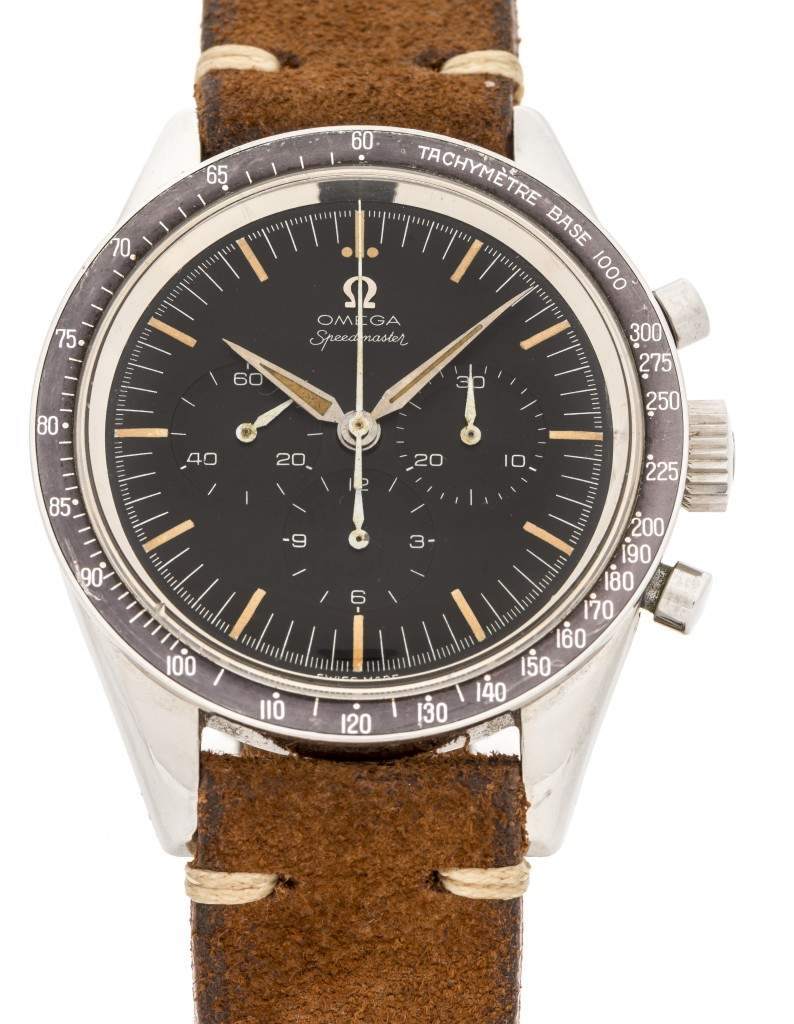
(picture credit: Roy & Sacha Davidoff – Geneva)
The 2998-1
The first Speedmaster, 2915, the broad arrow, is much admired for its purity.
Omega did not change much, but rather improved, with the next reference the 2998-1. As with the broad arrow, the second generation Speedmaster 2998-1 had no crown guards (Omega would first introduce crown guards by way of an asymmetrical case in 1964 with the 105.012 model, starting with the 105.012-63 first delivered in 1964).
While the CK 2915 had an hour hand that was in form of an arrow, the 2998-1 now had dauphine or alpha hands. Another difference was the bezel, which was now found only in black (only the very first batch of the 2998-1 still had the steel bezel). The 2998-1 carried the famous 321 Calibre movement of Lemania which launched the caliber in 1942 under the same 27 CHRO 212.
Like the broad arrow Speedmaster, the 2998-1 still did not carry the word ‘Professional’ on the dial (that would come later). The luminous indexes are also still radium at this point and only SWISS MADE is noted at the bottom of the dials without T on each side. The legislation banning Radium for Tritium was only passed a couple of years after the 2998-1 references. The 2998 references were produced between 1959 until roughly 1962.
The dial

(picture credit: Roy & Sacha Davidoff – Geneva)
Various dials existed for the 2998-1. The first and most rare version is the transitional dial from 1959 and was also used on the last batch of the 2915-3 watches. Notice the Oval ‘O’ which looks more like an ‘O’ that some-one sat on rather than a round ‘O’. This is from a very early 1959 watch as is expected for any first series. The other watches that came after the first series 2998-1 (still a 2998-1 dial) looked more round in form like this watch here. Notice how the O is more rounded.
The bezel
The Tachymetre bezel should indicate BASE 1000 which is absolutely correct and a must for the Ref 2998-1a nd 2998-2 (see below). Just to note all these bezels are based on a 1000 scale, but only the first series actually indicate this mention.

(picture credit: Roy & Sacha Davidoff – Geneva)
Although several versions of the tachymetric bezel with the word ‘Tachymètre’ exist, each corresponds to specific years or series.
The first is the steel bezel for 2915, in two versions, but both either are correct it seems. These are impossible to replace and the modern service ones are clearly different while some fakes have surfaced out of Germany which are a bit more difficult to detect. Then, Omega adapted the more legible black BASE 1000 bezel only found on references 2915-3, 2998-1 & 2998-2.
Afterwards, the (dot over) 90 bezel, which we have seen go from a few hundred dollars on ebay to a few thousand these days. I can’t imagine what the black BASE 1000 bezel is selling for…. Maybe 10 times that by now. These are particularly useful as they are used from 2998-3 reference all the way till 145.022-69 moonwatch ending in 1969 or early 1970.
Hands
Many 2998-1 watches do not carry the correct hands.
Several details are important including the length of the minutes hand, the shape of the hours hand, the ‘leaf’ counter hands and several variants of the center chronograph seconds hand, which even include the collector favorite lollipop chrono hand. First the minute hand must extend to the end of the dial and exactly touch the scale of the watch where the minute markers begin as the picture clearly shows below.
Also very important is the fact that the hour hand lume is usually triangular in shape in the earliest 2998-1 models (see picture below).
The hands of the subsidiary dials of the 2998-1 should be all in ‘leaf’ form and not in ‘stick’ form which was first to be found in later versions. The lollipop chronograph hand on these models has not been observed on the very first 2998-1, but the reference was the first to have this feature on the tail end of its production.

(picture credit: Roy & Sacha Davidoff – Geneva).
The movement 321 Calibre by Lemania
Most lovers of fine chronographs agree on one fact.
One of the most beautiful and best movements for chronographs came out of Lemania which supplied the biggest and finest names in watchmaking: Patek, Vacheron and Breguet. In fact when Lemania introduced the legendary 321 movement it was an official subsidiary of Omega.
Known for its column wheel controlled chronographs, Lemania also added magnetic fields and shocks which would prove to be important for Omega when NASA did its strict testing for the Omega Speedmaster for space. The Omega 2998-1 Speedmaster carries the legendary movement 321 Calibre by Lemania.
Look at how harmonious the movement is below. It is estimated that the power reserve of a Lemania 321 movement is approximately 50hrs.
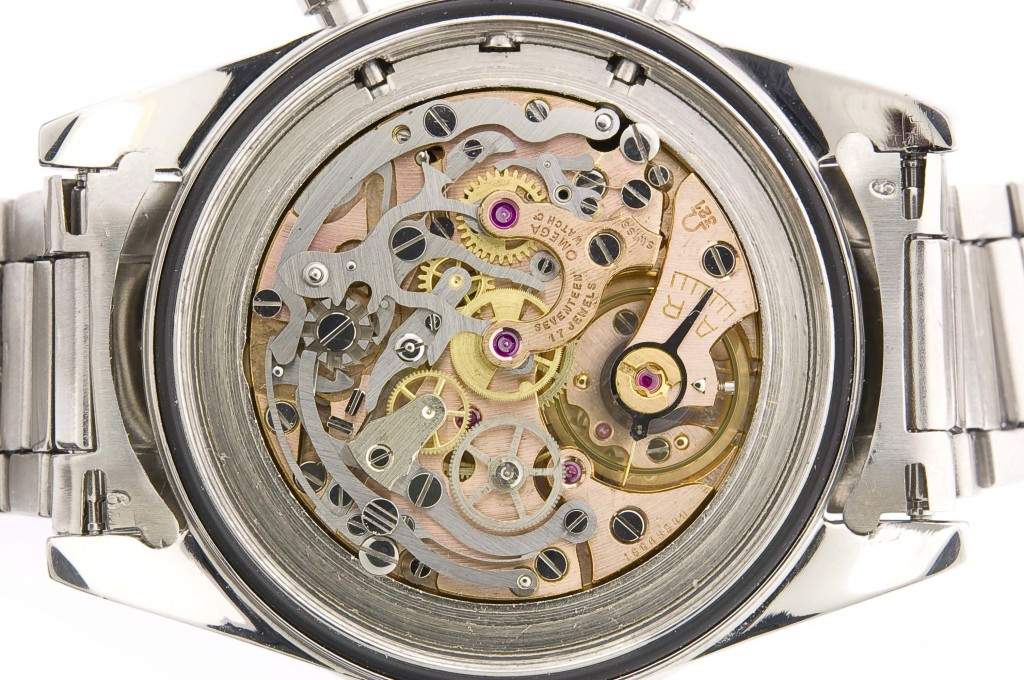
The Inside case back
The inside case back is pretty simple and carries the stamp of the model 2998-1. Unlike Rolex which often carries the date inside no date stampings can be found in the Omega 2998-1 model.
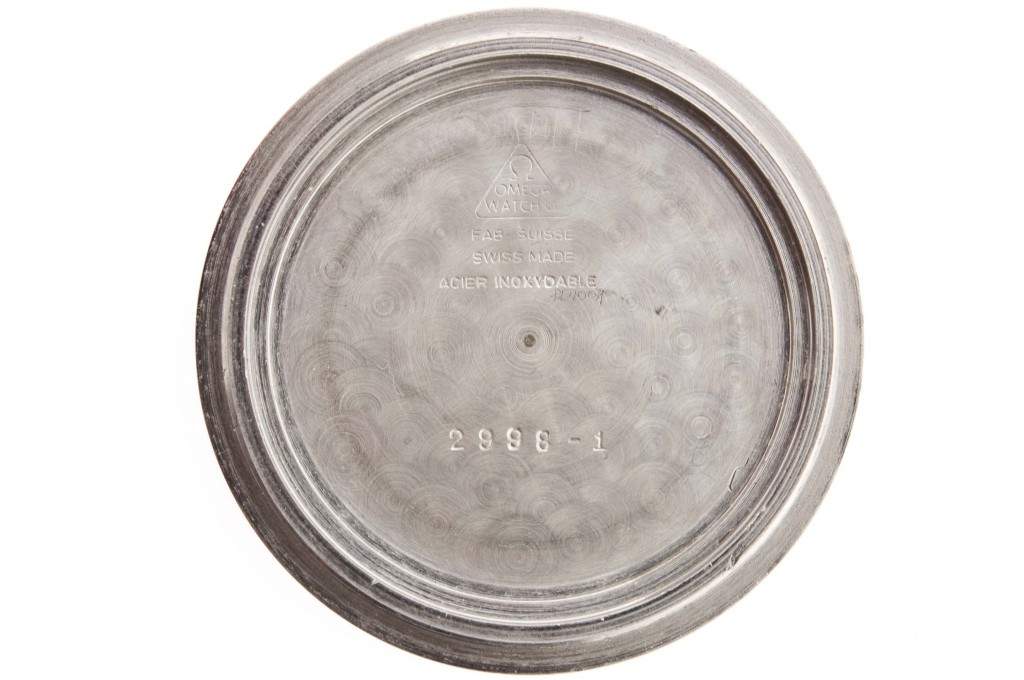
The case back and case of 2998-1
The case back of the Omega Speedmaster 2998-1 shows a little hippocampus logo and Omega Logo along with Speedmaster (see picture below) which would stay on all subsequent Omega Speedmaster models.
The early CK 2915-1 or broad arrow had a naked case back, only ‘Speedmaster’ was written on the edge of the case back while the hippocampus was introduced on the CK2915-2.
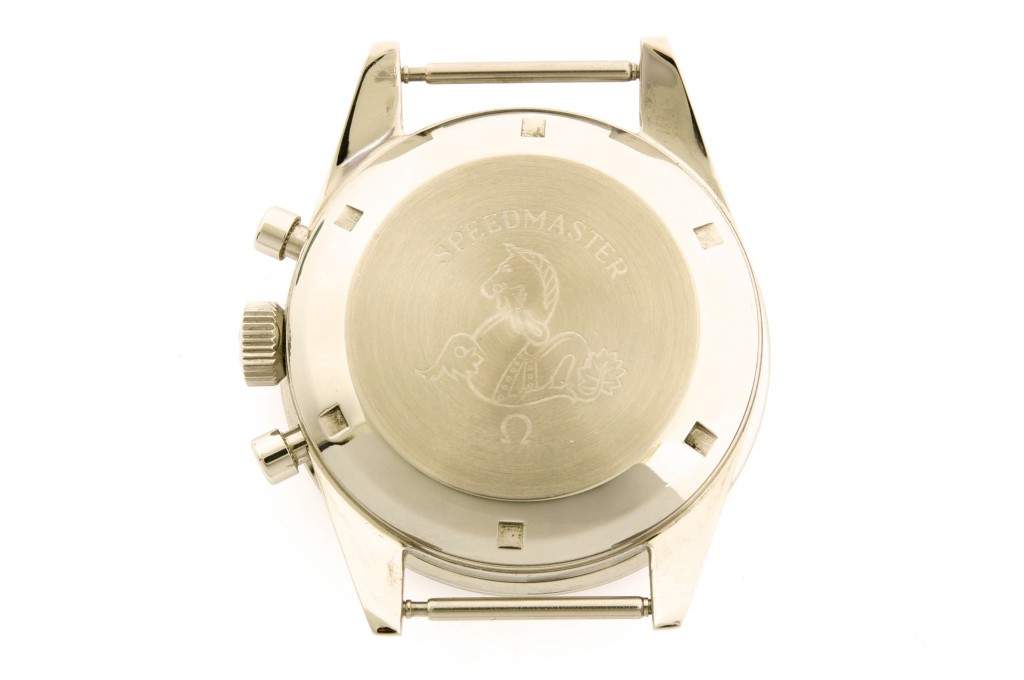
The side, pushers and plexi of the 2998-1
Below is a side view of the 2998-1.
The correct pushers should be 4mm in size, on subsequent references Omega enlarged the size to 5mm. The correct plexi on an Omega 2998-1 is superdomed.
Notice the absence of crown guards on the early 2998-1 models. Also while the CK 2915 was a fine watch it did not get high marks when it came to water resistance.
So with the next model the 2998-1 Omega also added the ‘O-ring’ gasket around the push buttons to improve water resistance.

The Crown of the 2998-1
The crown on the 2998 -1 should correctly carry the Omega logo. The size is 7mm (see picture below).
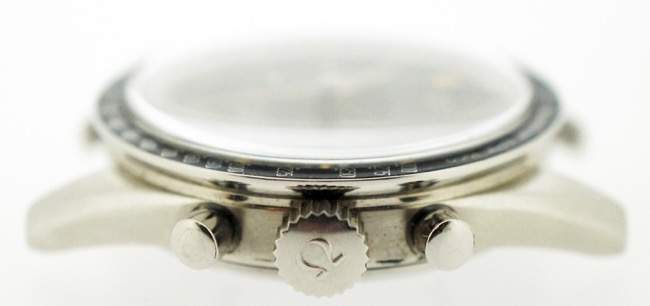
Serial Nr and Model Nr for the Omega Speedmaster
As mentioned before the CK 2998-1 was produced from 1959 to 1962.
The first ever model the Omega Speedmaster CK 2915 or broad arrow was produced between 1957-1959. Below is a small table* to see what serial number to expect from the early Omega Speedmaster models. For a complete list of Case reference Nrs you can consult Roman Hartmann’s list, to be found here.
Year Model type Calibre Serial Nr
- 1957 CK 2915 321 14xxxxxx
- 1958 CK 2915 321 15 /16xxxxxxx
- 1959 CK 2998-1 321 16 xxxxxxx
- 1960 CK 2998 321 17xxxxxxx
- 1961 CK 2998 321 18xxxxxxx
- 1962 CK 2998 / ST 105 321 18/19xxxxxxx
Concluding remarks
It is no exaggeration to state that the Omega Speedmaster is one of the most successful watch models ever launched in the history of watchmaking.
It is up there with the Rolex submariner and Jaeger Reverso.
When NASA approved the Speedmaster above five other brands in 1965 its place in watchmaking history and Iconic status was assured. It is estimated today that the majority of Omega’s brand value of almost $3bn is mainly due to the Speedmaster line. Every watch collector and every collector of chronographs cannot call his collection complete without an Omega Speedmaster.
While the first series CK 2915 broad arrow are the most sought after and valuable, we think the most beautiful and elegant early Speedmaster is the second model Omega introduced in 1959 called the 2998-1.
______
Article co-written by Sacha Davidoff an expert on Speedmasters and on vintage watches based in Geneva. He co-owns Davidoff Brothers in Geneva and their website is www.db1982.com
(Main picture credit: Jacques Olivier of Purist. It shows a later Speedmaster with the word Professional on the dial and crown guards). *Credit for the table goes to Robert Hartmann.
For collectors looking to understand the Speedmaster in more detail we highly recommend Moonwatch Only book written by Gregoire Rossier and Anthony Marquie published by Watchprint. This book has a very good technical overview of each component as well as each reference. Another useful book for pictures is the John Goldberger book on Omega.
Below are some pictures and advertisements to complement the report of the Speedmaster 2998-1 above. First picture is a CK 2915 also known as the broad arrow (Credit John Goldberger).

Several 2998 Speedmaster watches have the rare Lollipop seconds hands as seen below. Notice the marvellous tropical brown dial (picture credit: Roy & Sacha Davidoff Geneva).
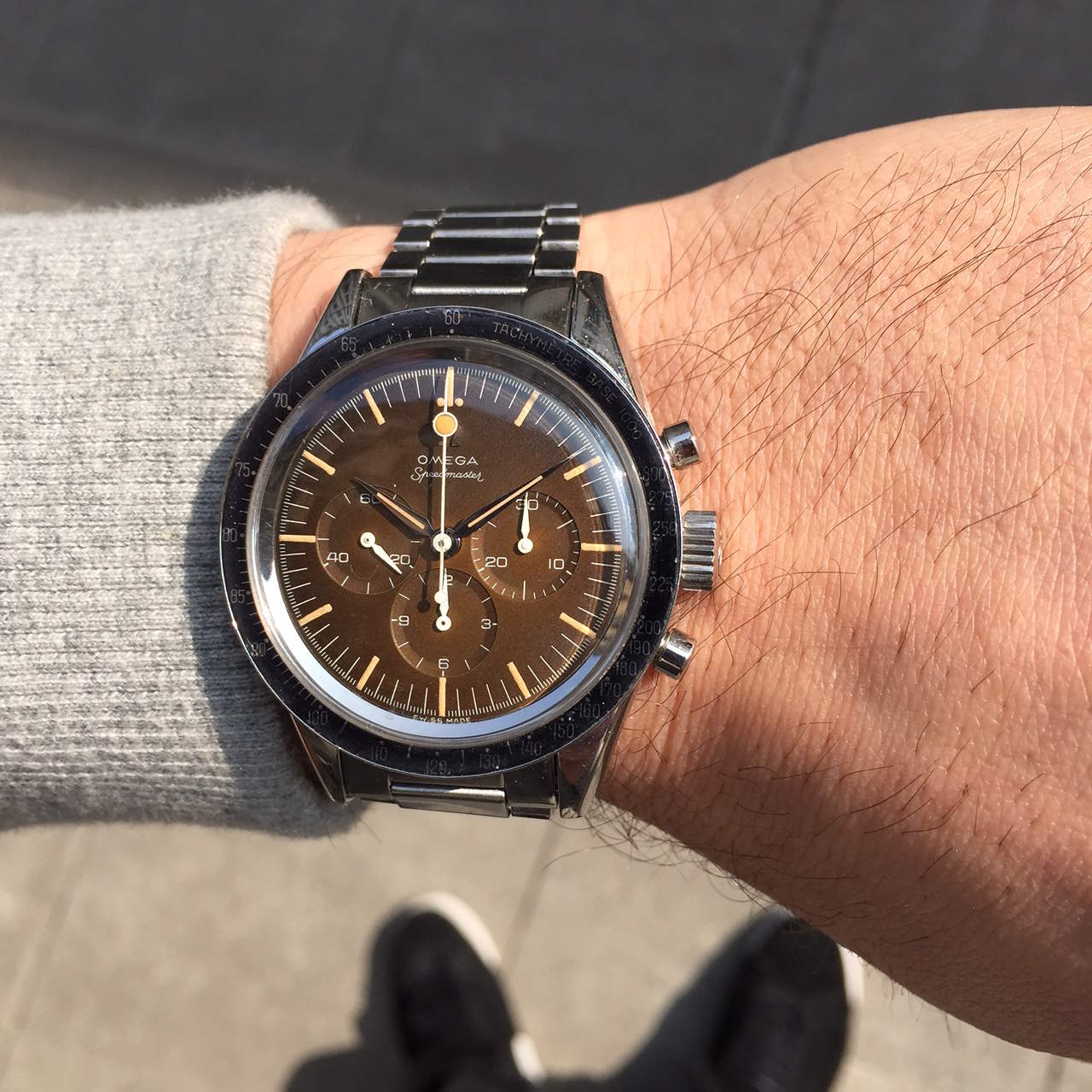
Several bezels existed of the 2998-1. Below a 1000 Tachymetre.
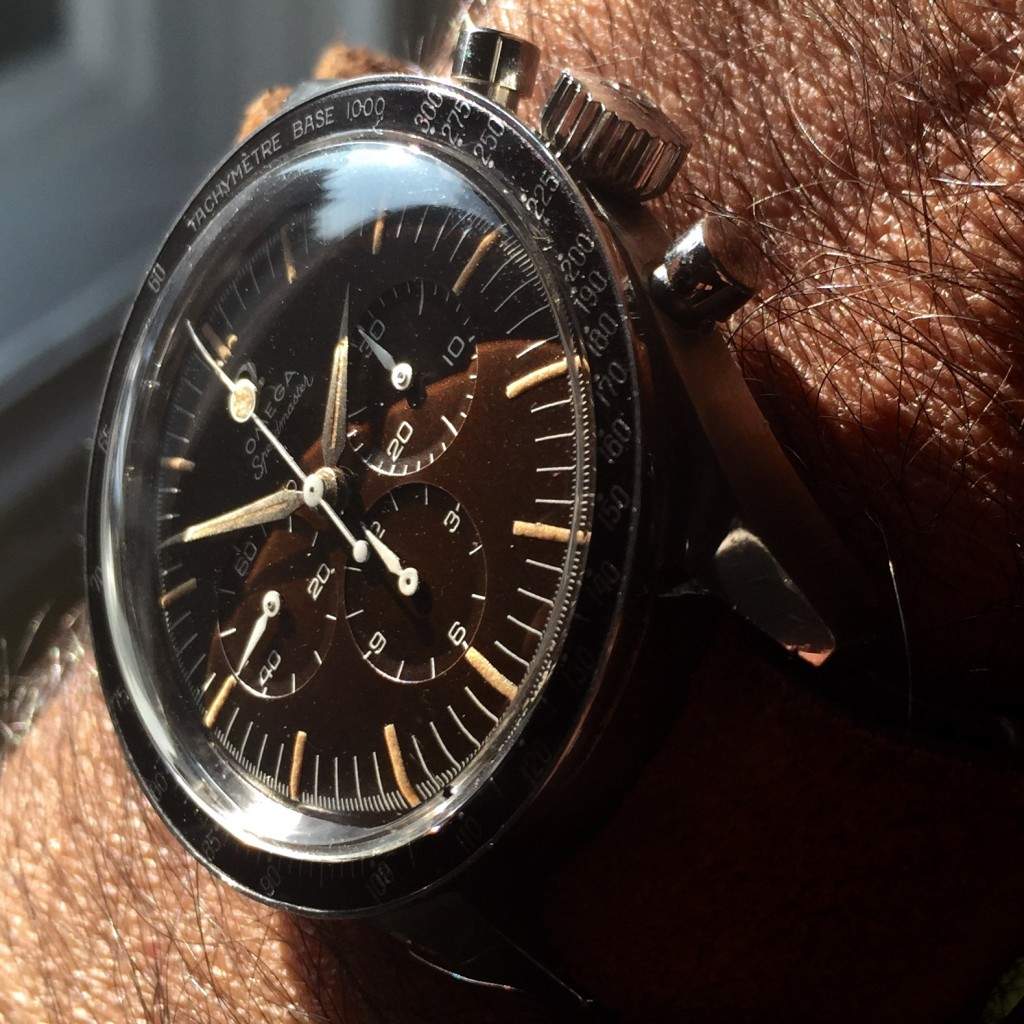
Another exceptional example with the rare 1000 Tachymetre rating is owned by a Middle East collector Hatem Fawzy (see watch above).
Notice the lightly turned ‘tropical’ dial (see watch below). This watch also has the rare large lollipop seconds hand. This watch is one of the best examples of a 2998-1 that we have seen.
